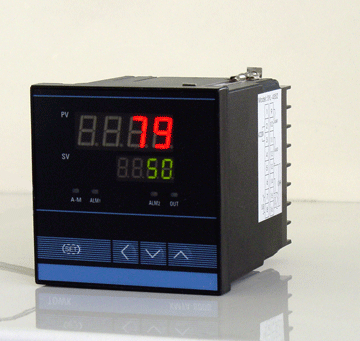Sawdustguy
Well-Known Member
This is my second thread designed to help those who may be building a new brewery. I was asked some of these questions recently and decided it would be handy information to have documented on the forum. Again, before I get flamed, I am not insinuating anyone reading this forum or post is a dummy.
The system below utilizes a Honeywell Y8610U intermittent pilot propane or natural gas valve kit (Intermittent Pilot Retrofit Kit). I feel this method may be a touch safer than the Brutus 10 method because there is no concearn over your pilot blowing out.
The Y8610U includes the following features:
• Y8610U kits can be used with either natural or LP gas.
• Y8610U provides a 90 second maximum ignition trial, shuts off, waits six minutes nominal, then reinitiates the pilot ignition sequence. The ignition trial, shutoff, and wait cycle repeat until the pilot lights or the call for heat ends.
• Y8610U kits can be used with either natural or LP gas; it provides timed trial for ignition and 100 percent pilot shutoff on loss of flame.
Each Y8610U kit includes:
— S8610U Intermittent Pilot Module.
— VR8304M Dual Valve Combination Gas Control.
— 392431 Igniter-Sensor* (Not used for this Application you will need to purchase a Q345A1313. See Below).
— 394800-30 Ignition Cable.
— 393691 Natural to LP Gas Conversion Kit.
— Wiring Harness.
— 393690-14 Straight Flange Kit (3/4 in.) .
— Reducer adapters for gas control.
— Adhesive mounting option for S8610.
— Installation hardware.
You will also need a Pilot Burner and Orifice.
— Q345A1313 Pilot Burner/Sensor Assembly.
— 390868-1 0.010" Orifice for Q345A1313.
The diagram below describes a low pressure propane system designed to control the temperature of a HLT. It can be used to control the temperature of any of the three vessels in your brewery. IMPORTANT: This system is designed for low pressure propane or Natural Gas. If using Propane, please make sure your propane regulator is set for 11 WC or less than 0.5 lbs pressure. Please make sure you read and understand the instructions accompanying the Y8610U kit from Honeywell before proceding. The information presented in this post can be found in that document also.
The Y8610U can be purchased from Patriot Supply. Their Ebay Store is (Patriot Supply Ebay Store).
The SYL4352 and Thermocouple can be purchased from Auber Instruments. Their URL is (Auber Instruments Website).

The system below utilizes a Honeywell Y8610U intermittent pilot propane or natural gas valve kit (Intermittent Pilot Retrofit Kit). I feel this method may be a touch safer than the Brutus 10 method because there is no concearn over your pilot blowing out.
The Y8610U includes the following features:
• Y8610U kits can be used with either natural or LP gas.
• Y8610U provides a 90 second maximum ignition trial, shuts off, waits six minutes nominal, then reinitiates the pilot ignition sequence. The ignition trial, shutoff, and wait cycle repeat until the pilot lights or the call for heat ends.
• Y8610U kits can be used with either natural or LP gas; it provides timed trial for ignition and 100 percent pilot shutoff on loss of flame.
Each Y8610U kit includes:
— S8610U Intermittent Pilot Module.
— VR8304M Dual Valve Combination Gas Control.
— 392431 Igniter-Sensor* (Not used for this Application you will need to purchase a Q345A1313. See Below).
— 394800-30 Ignition Cable.
— 393691 Natural to LP Gas Conversion Kit.
— Wiring Harness.
— 393690-14 Straight Flange Kit (3/4 in.) .
— Reducer adapters for gas control.
— Adhesive mounting option for S8610.
— Installation hardware.
You will also need a Pilot Burner and Orifice.
— Q345A1313 Pilot Burner/Sensor Assembly.
— 390868-1 0.010" Orifice for Q345A1313.
The diagram below describes a low pressure propane system designed to control the temperature of a HLT. It can be used to control the temperature of any of the three vessels in your brewery. IMPORTANT: This system is designed for low pressure propane or Natural Gas. If using Propane, please make sure your propane regulator is set for 11 WC or less than 0.5 lbs pressure. Please make sure you read and understand the instructions accompanying the Y8610U kit from Honeywell before proceding. The information presented in this post can be found in that document also.
The Y8610U can be purchased from Patriot Supply. Their Ebay Store is (Patriot Supply Ebay Store).
The SYL4352 and Thermocouple can be purchased from Auber Instruments. Their URL is (Auber Instruments Website).







